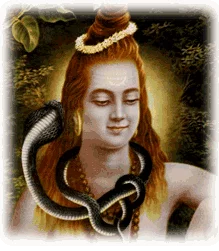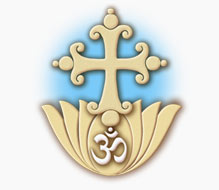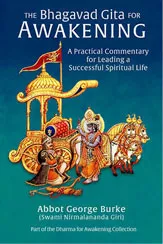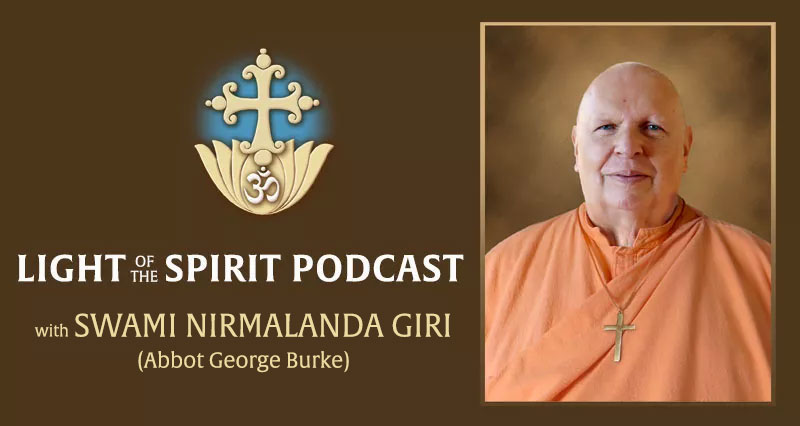
Welcome to our podcast page, where you can listen to talks by Swami Nirmalananda Giri (Abbot George Burke) about various aspects of practical spiritual life, and remarkable spiritual people he has known.
These spiritual podcasts will include talks on Original Christianity and Original Yoga, Soham Meditation, what is necessary for success in yoga, vegetarianism, reincarnation, the connection between Jesus and India, and much more. We hope to add new podcasts frequently, so visit often!
Below you will find a list of the different podcast categories, with each podcast linking to its page. Below that will be our video podcasts, which we will add from time to time.
Then the Podcasts will be listed with the newest ones at the top of the page. With dozens of podcasts, this page is quite long. Keep scrolling to discover hidden gems.
Listen to Podcasts Below or on Your Favorite App
Podcast Listing
Meditation and other aspects of spiritual life:
- About Spiritual Experience and Abilities–What Should the Beginner Yogi Know?–Part 4
- What Should the Beginner Yogi Know About Spiritual Experience and Abilities?–Part 3
- Spiritual Experience and Abilities–What Should the Beginning Yogi Know?–Part 2
- What Should the Beginner Yogi Know About Spiritual Experience and Abilities?–Part 1
- How to Pronounce the Soham Mantra in Meditation
- Plain Talk About God
- Beyond Theory and Belief to Actual Experience
- Why We Meditate and the Obstacles We Overcome
- Yoga, God, and Gurus: an Important Perspective
- How Should We Respond to Outer and Inner Negativity and Evil?
- Saviors or Personal Responsibility?
The Yoga Life:
- Introducing the Yoga Life: Laying the Foundations
- The Yoga Life 2: a Practical Understanding of Harmlessness and Truthfulness
- The Yoga Life 3: Asteya, Brahmacharya, and Aparigraha, and the Great Vow
- The Yoga Life 4: Niyama, the “Do”s of Yoga
- The Yoga Life 5: The Importance of Vegetarianism for the Yogi
- The Yoga Life 6: How to Tell if You Are Making Progress in Meditation
- The Yoga Life 7: Tips for Successful Meditation
What is?…
Saints I have Known:
- The Real Yogananda: 8 Stories of Mischief and Mercy
- Swami Rama of Hardwar (Ram Kunj)
- Four First-Class Sadhus
- The Healer, the Raja, Neem Karoli Baba, and the Unnamed Master
- Three Remarkable Indian Saints–Swami Sivananda-Hridayananda, The King’s Daughter in Bengal, and Swami Vidyananda (Bidyananda) Giri
- Memories of Sri Maitri Devi
- The Monk That Challenged Lenin: Yogeshwar Brahmachari
- Raihana Tyabji, the Moslem Saint Who Worshiped Krishna
- Didima (Swami Muktananda Giri), Mother of Anandamayi Ma
- The Hidden Status of Master Yogis–Part 1
- The Hidden Status of Master Yogis, Part 2
- The “Mind” of Anandamayi Ma
Stories of Swami Sivananda of Rishikesh:
- Remembering Sivananda, Part 1
- Remembering Sivananda, Part 2
- I Meet Swami Sivananda of Rishikesh
- Swami Sivananda’s Humility
- Days with Sivananda
- Swami Sivananda and Jesus (and More)
- Swami Sivananda’s Humor
- Swami Sivananda and the Song of Admonition
The Bhagavad Gita
Monastic Life:
Interviews of Abbot George on Radio and More:
- Jesus as Guardian of the Earth
- Moksha, the Seven Levels of Consciousness, and Avatars
- How to Become an Angel (and More)
- Evolution (Material and Spiritual) and What It Means for the Yogi
- The Symbolism of Christmas and Its Universal Message
- Vegetarianism: an Interview of Abbot George on Australian Radio
- Vegetarianism: an Interview of Abbot George on Australian Radio, Part 2
Video Podcasts
Most Recent Podcasts
The “Mind” of Anandamayi Ma
 Swami Nirmalananda was under Anandamayi Ma’s guidance from 1963 until her leaving this world in 1982. He made many trips to India during this time and knew many of the people in her orbit. Here he shares some stories about her unique nature, including the story of Ma and the brainwave machine.
Swami Nirmalananda was under Anandamayi Ma’s guidance from 1963 until her leaving this world in 1982. He made many trips to India during this time and knew many of the people in her orbit. Here he shares some stories about her unique nature, including the story of Ma and the brainwave machine.
This podcast is 6:30 minutes long.
Saviors, or Personal Responsibility?
 In this podcast, Swami Nirmalananda answers the question, “Can you talk about how Jesus is the Savior, knowing that our liberation is our personal responsibility?”
In this podcast, Swami Nirmalananda answers the question, “Can you talk about how Jesus is the Savior, knowing that our liberation is our personal responsibility?”
First, he talks about what a Savior is, and what they do. And he speaks about our own personal responsibility for our own spiritual welfare and advancement.
This podcast is just under 21 minutes long.
Swami Sivananda and the Song of Admonition
 Swami Sivananda composed many songs in English to convey his teachings, the most famous being the Song of Ities listing such virtues as Simplicity, Purity and Charity. Others were advice and inspiration for spiritual endeavor. This Song of Admonition is the best known. Below the audio podcast here is a transcript of the song.
Swami Sivananda composed many songs in English to convey his teachings, the most famous being the Song of Ities listing such virtues as Simplicity, Purity and Charity. Others were advice and inspiration for spiritual endeavor. This Song of Admonition is the best known. Below the audio podcast here is a transcript of the song.
This podcast is 10:25 minutes long.
How Should We Respond to Outer and Inner Negativity and Evil?
 In this podcast our friend Jonathan Mahoney asks Abbot George, “Could you tell us the difference between Satan and Mara, and how we should respond to outer and inner negativity and evil?”
In this podcast our friend Jonathan Mahoney asks Abbot George, “Could you tell us the difference between Satan and Mara, and how we should respond to outer and inner negativity and evil?”
Abbot George discusses:
- How both Satan and Mara are aspects of the cosmic force to get us to stop our spiritual quest.
- How resistance to negativity and evil make us stronger by developing our will towards spiritual growth.
- How we have to be constructive towards that which is positive and destructive towards that which is negative.
This podcast is 24:38 minutes long.
What Is Satan?
 In this podcast Jonathan Mahoney asks Abbot George, “What is Satan?” Though this is a topic some people find fascinating, it is one that we should not dwell on, for Abbot George says “talking about negativity can bring the mind into the orbit of negativity.”
In this podcast Jonathan Mahoney asks Abbot George, “What is Satan?” Though this is a topic some people find fascinating, it is one that we should not dwell on, for Abbot George says “talking about negativity can bring the mind into the orbit of negativity.”
But it is good to have a basic understanding of evil so that we can be on our guard against inner and outer evil. Abbot George illumines this podcast with apt illustrations and stories.
This podcast is 18:28 minutes long.
What Is Maya?
 In this podcast Abbot George discusses Maya as:
In this podcast Abbot George discusses Maya as:
- Maya as the hypnotic power of creation.
- It is mistaking the Unreal for the Real.
- It is caused by our instinctive reactions to sense perceptions.
- He explains the common simile of mistaking a rope for a snake.
This podcast is just over 11 minutes long.
What Is Mahashakti?

In this podcast Abbot George discusses the “Great Power” (the meaning of Mahashakti) as the entire range of relative existence, composed of vibrating energy, and much more.
This podcast is just over 13 minutes long.
The Hidden Status of Master Yogis, Part 2

Abbot George continues his discussion concerning how Lucifer could stand to be in the presence of Jesus, and how the status of master yogis is often hidden. He begins by giving his own experiences with spiritual figures in India, and continues with what he had heard of others.
This podcast is just over 20 minutes long.
The Hidden Status of Master Yogis, Part 1
 Recently our friend Jonathan Mahoney asked Abbot George Burke how Lucifer could tempt Jesus if evil spirits cannot stand high spiritual vibrations. In this first of two podcasts Abbot George answers this question, showing how the status of master yogis is often hidden, giving examples from the lives of Swami Sivananda of Rishikesh, Ananadamayi Ma and others.
Recently our friend Jonathan Mahoney asked Abbot George Burke how Lucifer could tempt Jesus if evil spirits cannot stand high spiritual vibrations. In this first of two podcasts Abbot George answers this question, showing how the status of master yogis is often hidden, giving examples from the lives of Swami Sivananda of Rishikesh, Ananadamayi Ma and others.
This podcast is just over 22 minutes long.
The REAL Yogananda: 8 Stories of Mischief and Mercy
 Abbot George lived near the Hollywood SRF center in the early 60’s and knew many of the direct disciples of Paramhansa Yogananda. He learned many interesting stories about Yogananda from them, some of which we share in this podcast.
Abbot George lived near the Hollywood SRF center in the early 60’s and knew many of the direct disciples of Paramhansa Yogananda. He learned many interesting stories about Yogananda from them, some of which we share in this podcast.
About Spiritual Experience and Abilities–What Should the Beginner Yogi Know?–Part 4
 Abbot George delineates the very real and very extreme dangers of imbalancing experiences that fake yoga can produce, contrasting this with his observation of the cardinal qualities of real yogis he met.
Abbot George delineates the very real and very extreme dangers of imbalancing experiences that fake yoga can produce, contrasting this with his observation of the cardinal qualities of real yogis he met.
This podcast is 16 minutes long.
What Should the Beginner Yogi Know About Spiritual Experience and Abilities?–Part 3
 “Have I learned anything? Has this spiritual experience changed my awareness, my meditation?” Abbot George contrasts the effect of real spiritual experience with examples of people who were deluded by visions and dreams.
“Have I learned anything? Has this spiritual experience changed my awareness, my meditation?” Abbot George contrasts the effect of real spiritual experience with examples of people who were deluded by visions and dreams.
This podcast is 14 minutes long.
Spiritual Experience and Abilities–What Should the Beginning Yogi Know?–Part 2
 The state of perfected beings like Buddha, Krishna, and Jesus is far greater than most people’s concept of God. Abbot George tells the story of Catholic stigmatist and visionary Therese Neumann’s response to Christian who were overwhelmed with Christ’s miracles as an example of how we are satisfied with so little in our aspirations.
The state of perfected beings like Buddha, Krishna, and Jesus is far greater than most people’s concept of God. Abbot George tells the story of Catholic stigmatist and visionary Therese Neumann’s response to Christian who were overwhelmed with Christ’s miracles as an example of how we are satisfied with so little in our aspirations.
This podcast is 18 minutes long.
What Should the Beginner Yogi Know About Spiritual Experience and Abilities?–Part 1
 What should the beginner yogi know about spiritual experience and abilities?” Abbot George draws on a lifetime of study and personal experience and observation to present a many-facted answer to this important question.
What should the beginner yogi know about spiritual experience and abilities?” Abbot George draws on a lifetime of study and personal experience and observation to present a many-facted answer to this important question.
This podcast is 16 minutes long.
How to Pronounce the Soham Mantra in Meditation
 The practice of Soham Yoga is very simple. Making ourselves aware of our breathing, when we inhale we mentally intone So throughout the inhalation, and when we exhale we mentally intone Ham throughout the exhalation. And we do this continuously. When we are doing other things at the same time, we call it Soham Japa, and when we sit upright with closed eyes, we call it Soham Meditation.
The practice of Soham Yoga is very simple. Making ourselves aware of our breathing, when we inhale we mentally intone So throughout the inhalation, and when we exhale we mentally intone Ham throughout the exhalation. And we do this continuously. When we are doing other things at the same time, we call it Soham Japa, and when we sit upright with closed eyes, we call it Soham Meditation.
For a mantra to produce its effect it must be pronounced correctly. Listen to this podcast to learn the correct way to pronounce the Soham mantra.
What Is the Bhagavad Gita, and Why Is It So Valuable?

In today’s podcast our friend Jonathan Mahoney asks Abbot George about the Bhagavad Gita, its story and its value for the spiritual seeker.
Abbot George discusses Vyasa, the pivotal figure in early Hinduism, and the author of many works, including the epic Mahabharata, from which the Bhagavad Gita is taken.
This podcast is about 16 minutes long.
Jesus as Guardian of the Earth
In today’s podcast our friend Jonathan Mahoney asks Abbot George about Jesus’ role as guardian of the Earth.
Listen and you will discover:
- How Lucifer fell and how it affected the earth.
- Who were Adam and Eve and where was Paradise.
- Who were the “Matrikas.”
- What was the special mystery of the Crucifixion.
- The Buddhist master who had two Saviors.
And much more. This podcast is about 34 minutes long.
Moksha, the Seven Levels of Consciousness, and Avatars

In today’s podcast, Abbot George is asked a question about Moksha. He then talks about arguments regarding levels of consciousness: are there seven levels of consciousness, or five levels, or fourteen levels?
Then he discusses the seven levels of consciousness or lokas (worlds or main divisions) in which the whole range of evolutionary relative existence (rungs on the evolutionary ladder) is encompassed, corresponding to the seven chakras.
He discusses the nature of consciousness in each of these realms, and their gradations or levels.
Then he illumines the much-misunderstood topic of avatars: what is the purpose and nature of avatars?
And most importantly he discusses how all these things relate to us and our spiritual evolution. The podcast is about 39 minutes long.
How to Become an Angel (and More)

Today our friend Jonathan Mahoney asks Abbot George, “How does a human being evolve into an angel in this lifetime? How do they ‘get out of the game’”?
In this podcast Abbot George talks about the ideas of the processes of evolution in Christian and Hindu cosmologies. He then discusses the two paths of evolution: the natural path by “accumulating a lot of goodness,” and the deliberate path of evolution through yoga and meditation.
He also talks about evolving to “tapa lokas,” realms which are dedicated to intentional and intensive sadhana and spiritual practice. And he tells of people who limit their spiritual horizons by merely mundane aspirations. Listen to discover this and much more. The podcast is 20 minutes long.
Evolution (Material and Spiritual) and What It Means for the Yogi
 In a new podcast, our friend Jonathan Mahoney asks Abbot George Burke the following question:
In a new podcast, our friend Jonathan Mahoney asks Abbot George Burke the following question:
From Robe of Light, we have the quote: “The drama of creation simply stated is this. God breathes forth this vast universe. Slowly, it comes out and evolves according to set patterns. Then, after a precise measure of time, he breathes it back in again, involves it and vanishes. This he does eternally.” So could you give us your definition of evolution and how it relates to the individual?
Abbot George begins by describing the ages-long process of “involution,” the manifestation into and mastery of material creation, and the increasingly conscious process of evolution, “to move out of” materiality in our return to God-consciousness. In particular he speaks of the later stages of human evolution, where we move from outer awareness to inner awareness, and from outer dependency to self-reliance and responsibility. At that point we become capable to evolve ourselves consciously through the practice of yoga sadhana. The podcast is 48:00 minutes long.
Robe of Light is available to read or download at OCOY.org, or as a paperback or ebook at Amazon.com.
Understanding Karma as the Basis of Reincarnation
 In a followup interview with Bianca in Adelaide, Australia, Abbot George discusses the importance of understanding karma as the basis of reincarnation. With this understanding, we can begin to comprehend our present situation in life, and we can become empowered to create our future.
In a followup interview with Bianca in Adelaide, Australia, Abbot George discusses the importance of understanding karma as the basis of reincarnation. With this understanding, we can begin to comprehend our present situation in life, and we can become empowered to create our future.
Bianca asks Abbot George about the connections between people we meet in this life, and how we react with them, and our having known them in previous lives. He answers with examples both in his own life and those of others that illustrate the relationship between this life and past lives. The podcast is 50:30 minutes long.
Reincarnation: Its Causes and Consequences
 Bianca Vlahos of the Australian radio station PBA-FM interviewed Abbot George Burke on the broad topic of reincarnation. They discussed the source of reincarnation (karma—our actions, both positive and negative) and the purpose of reincarnation: our spiritual evolution and growth. Bianca gave the interview this title: “The Spiritual Journey of Humans – Discussing pain and suffering, enlightenment, karma, forgiveness, reincarnation, awakening, meditation, mindfulness and more. Interview with Abbot George Burke discussing his book May a Christian Believe in Reincarnation?” (This book is available in print and as a free ebook on Amazon, and also on our site here. The podcast is 52:00 minutes long.
Bianca Vlahos of the Australian radio station PBA-FM interviewed Abbot George Burke on the broad topic of reincarnation. They discussed the source of reincarnation (karma—our actions, both positive and negative) and the purpose of reincarnation: our spiritual evolution and growth. Bianca gave the interview this title: “The Spiritual Journey of Humans – Discussing pain and suffering, enlightenment, karma, forgiveness, reincarnation, awakening, meditation, mindfulness and more. Interview with Abbot George Burke discussing his book May a Christian Believe in Reincarnation?” (This book is available in print and as a free ebook on Amazon, and also on our site here. The podcast is 52:00 minutes long.
The Symbolism of Christmas and Its Universal Message
 For our Christmas offering we offer you a podcast about Christmas, and about Christ being born in us, and how Christmas should mean a transformation and renewal of the individual, rather than simply an exernal observance. This podcast is from an interview by our friend Bianca Vlahos of radio station FIVEaa in Adelaide, Australia. The podcast is 23:07 minutes long.
For our Christmas offering we offer you a podcast about Christmas, and about Christ being born in us, and how Christmas should mean a transformation and renewal of the individual, rather than simply an exernal observance. This podcast is from an interview by our friend Bianca Vlahos of radio station FIVEaa in Adelaide, Australia. The podcast is 23:07 minutes long.
Listen to more:
Everyday Wisdom from Buddha: Part 2 of Bianca Vlahos’ Interview
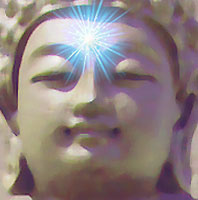 In part 2 of the recent interview with Abbot George about Buddha’s everyday wisdom as recorded in the Dhammapada, Bianca Vlahos of radio station PBA-FM in Adelaide, South Australia, inquired further about how to lead an effective and uplifting life in the world applying the principles which Buddha advocated. One aspect of the discussion was the necessity to have patience and perseverance in spiritual endeavor, with Abbot George talking about the saying, “Lighting flashes brightly for only a moment, but the dawning of day is gradual and inevitable.” The podcast length is 32:03 minutes.
In part 2 of the recent interview with Abbot George about Buddha’s everyday wisdom as recorded in the Dhammapada, Bianca Vlahos of radio station PBA-FM in Adelaide, South Australia, inquired further about how to lead an effective and uplifting life in the world applying the principles which Buddha advocated. One aspect of the discussion was the necessity to have patience and perseverance in spiritual endeavor, with Abbot George talking about the saying, “Lighting flashes brightly for only a moment, but the dawning of day is gradual and inevitable.” The podcast length is 32:03 minutes.
Buddha’s Wisdom for Every Day: A Radio Interview
 How can Buddha’s wisdom as recorded in the Dhammapada be applied in our every-day lives? That was the topic of the latest radio interview of Abbot George Burke by Bianca Vlahos of radio station PBA-FM in Adelaide, South Australia last year. Bianca read a copy of Abbot George’s book The Dhammapada for Awakening (available on our site here and on Amazon here) and as usual had very good and practical questions for Abbot George on how to best apply Buddha’s wisdom. The podcast length is 29:27 minutes
How can Buddha’s wisdom as recorded in the Dhammapada be applied in our every-day lives? That was the topic of the latest radio interview of Abbot George Burke by Bianca Vlahos of radio station PBA-FM in Adelaide, South Australia last year. Bianca read a copy of Abbot George’s book The Dhammapada for Awakening (available on our site here and on Amazon here) and as usual had very good and practical questions for Abbot George on how to best apply Buddha’s wisdom. The podcast length is 29:27 minutes
Vegetarianism, Part 2: Australian Radio Interview Followup
 As the subject matter of vegetarianism and spirituality in the last interview was so vast, Bianca Vlahos followed with this interview a few weeks later. This podcast includes the rather comic as well as serious reasons why Abbot George bacame a vegetarian. The podcast length is 33:59 minutes.
As the subject matter of vegetarianism and spirituality in the last interview was so vast, Bianca Vlahos followed with this interview a few weeks later. This podcast includes the rather comic as well as serious reasons why Abbot George bacame a vegetarian. The podcast length is 33:59 minutes.
Vegetarianism: an Interview of Abbot George on Australian Radio
 Bianca Vlahos, radio announcer and producer at PBA-FM in Adelaide, Australia, became a vegan for a multitude of reasons. She researched the topic exhaustively and found several articles about aspects of vegetarianism on our website (See Spiritual Benefits of a Vegetarian Diet and Humans: Are We Carnivores or Vegetarians by Nature?) and decided to contact Abbot George about doing a radio interview on the subject of the “connection between the Clarification of Morals & Ethics in relation to the food we eat.” This is that interview. The podcast length is 37:19 minutes.
Bianca Vlahos, radio announcer and producer at PBA-FM in Adelaide, Australia, became a vegan for a multitude of reasons. She researched the topic exhaustively and found several articles about aspects of vegetarianism on our website (See Spiritual Benefits of a Vegetarian Diet and Humans: Are We Carnivores or Vegetarians by Nature?) and decided to contact Abbot George about doing a radio interview on the subject of the “connection between the Clarification of Morals & Ethics in relation to the food we eat.” This is that interview. The podcast length is 37:19 minutes.
The Big Picture: How to Gain the Vision of God (Reflections on Monastic Life – Part 2)
 Most people live in The Little Picture with small ideas and small goals, all short term. But some live in The Big Picture, considering their life as a whole extending through many years, realizing that the small aspects will be forgotten, but the overall character of their life will determine their future beyond this world as well as within it. Learn how this is done.
Most people live in The Little Picture with small ideas and small goals, all short term. But some live in The Big Picture, considering their life as a whole extending through many years, realizing that the small aspects will be forgotten, but the overall character of their life will determine their future beyond this world as well as within it. Learn how this is done.
Reflections on Monastic Life – Part 1
 Here Abbot George shares his reflections on monastic life as he approaches the fifty-second anniversary of his taking sannyas. He discusses who should take up monastic life and who should not. To this end he talks about swadharma, which means someone’s own inherent disposition, fundamental nature, or potentiality; inherent state of mind; state of inner being.
Here Abbot George shares his reflections on monastic life as he approaches the fifty-second anniversary of his taking sannyas. He discusses who should take up monastic life and who should not. To this end he talks about swadharma, which means someone’s own inherent disposition, fundamental nature, or potentiality; inherent state of mind; state of inner being.
Swami Rama of Hardwar (Ram Kunj)
 This podcast is about Abbot George’s meetings with the Kashmiri saint Swami Rama of Hardwar. You will learn of:
This podcast is about Abbot George’s meetings with the Kashmiri saint Swami Rama of Hardwar. You will learn of:
Swami Rama’s simple outward demeanor but fiery inner nature,
The story of Swami Rama’s teacher,
Swami Rama on Kundalini,
And Swami Ram on Om.
Listen to more:
Four First-Class Sadhus
 Here Abbot George relates his experiences with four monks he met in India that were definitely of the first class. These were:
Here Abbot George relates his experiences with four monks he met in India that were definitely of the first class. These were:
The Ganges island swami
His friend in black
The Swami who would not be a pet
And his guru who laughed.
The Healer, the Raja, Neem Karoli Baba, and the Unnamed Master
 This podcast highlights meetings with four remarkable saints:
This podcast highlights meetings with four remarkable saints:
My camera darshan of Neem Karoli Baba;
How I was healed without asking by Swami Krishnananda, a disciple of Holy Mother Sarada Devi;
My acquaintance with HRH Durga Singh, the Raja of Solan (Yogi Bhai), the saintly devotee of Anandamayi Ma;
The Unnamed Master, the yoga adept who hid his abilities behind the mask of ordinariness.
Three Remarkable Indian Saints
 In this podcast, Abbot George tells of Swami Vidyananda (Bidyananda), Yogananda’s disciple who was the director of the Yogoda Satsanga school which Yogananda had founded before coming to America. He also tells about Swami Sivananda-Hridayananda (Doctor Mother) who was the eye surgeon turned Sannyasini who was the devoted disciple of Swami Sivananda of Rishikesh. And he tells of “The King’s Daughter in Bengal.”
In this podcast, Abbot George tells of Swami Vidyananda (Bidyananda), Yogananda’s disciple who was the director of the Yogoda Satsanga school which Yogananda had founded before coming to America. He also tells about Swami Sivananda-Hridayananda (Doctor Mother) who was the eye surgeon turned Sannyasini who was the devoted disciple of Swami Sivananda of Rishikesh. And he tells of “The King’s Daughter in Bengal.”
Memories of Sri Maitri Devi
 Sri Maitri Devi had been born in the wealthiest and most influential family in Delhi. Her grandfather was the guru of an entire spiritual community in Agra (home of the Taj Mahal). Her guru, a female saint named Swami Purnananda, told her that she should become a nun and build a beautiful ashram in Delhi. “Many women will desire to live there, but you must only accept girls from the best and most devout families. If their families are not dharmic, refuse their request to live with you.”
Sri Maitri Devi had been born in the wealthiest and most influential family in Delhi. Her grandfather was the guru of an entire spiritual community in Agra (home of the Taj Mahal). Her guru, a female saint named Swami Purnananda, told her that she should become a nun and build a beautiful ashram in Delhi. “Many women will desire to live there, but you must only accept girls from the best and most devout families. If their families are not dharmic, refuse their request to live with you.”
The Monk That Challenged Lenin: Yogeshwar Brahmachari
 Abbot George first saw Sri Yogeshwar Brahmachari at the birthday celebration of Anandamayi Ma in 1971. He was sitting on the speakers’ platform along with Ma and many spiritual figures of Northern India. While the others looked around and often made some overt response to what was being said over the microphone, Yogeshwarji sat totally unmoving for hours with closed eyes and holding his yoga danda upright without the slightest movement. Quiet and unassuming, he yet stood out in all situations.
Abbot George first saw Sri Yogeshwar Brahmachari at the birthday celebration of Anandamayi Ma in 1971. He was sitting on the speakers’ platform along with Ma and many spiritual figures of Northern India. While the others looked around and often made some overt response to what was being said over the microphone, Yogeshwarji sat totally unmoving for hours with closed eyes and holding his yoga danda upright without the slightest movement. Quiet and unassuming, he yet stood out in all situations.
Listen to how he went to Russia and challenged Vladimir Lenin, the first despot of the Soviet Union, on his atheistic ideas and the lack of freedom and morality which they produced.
Raihana Tyabji, the Moslem Saint Who Worshipped Krishna
 Although Raihana was from a prominent Moslem family and every Friday had a man come to her room in Delhi and recite a chapter from the Koran, which she then kissed in reverence, she was a fervent devotee of Krishna, whose picture she kept on an altar where she could always see it. She had also written a remarkable book in 1924, The Heart of a Gopi, about the early life of Krishna based on her recall of a past life.
Although Raihana was from a prominent Moslem family and every Friday had a man come to her room in Delhi and recite a chapter from the Koran, which she then kissed in reverence, she was a fervent devotee of Krishna, whose picture she kept on an altar where she could always see it. She had also written a remarkable book in 1924, The Heart of a Gopi, about the early life of Krishna based on her recall of a past life.
Didima (Swami Muktananda Giri), Mother of Anandamayi Ma
 This is the remarkable story of Anandamayi Ma’s mother, Srimati Mokshada Sundari Devi Bhattacharya, who became Swami Muktananda Giri but was usually called Didima or Giriji. In this podcast Abbot George tells of his first meeting with her and some of his times with Didima, her background, and the humble and hidden role she played as the mother of one of India’s most famous spiritual figures, Anandamayi Ma.
This is the remarkable story of Anandamayi Ma’s mother, Srimati Mokshada Sundari Devi Bhattacharya, who became Swami Muktananda Giri but was usually called Didima or Giriji. In this podcast Abbot George tells of his first meeting with her and some of his times with Didima, her background, and the humble and hidden role she played as the mother of one of India’s most famous spiritual figures, Anandamayi Ma.
The Yoga Life 7: Tips for Successful Meditation
 In this the seventh podcast on the Yoga Life, Abbot George gives tips for success in meditation.
In this the seventh podcast on the Yoga Life, Abbot George gives tips for success in meditation.
You will hear about:
• how to deal with inner negativity
• “getting rid of the ego”?
• the importance of keeping your spiritual life inside
• advice about your place of meditation
• the use of holy imagery in your home and meditation place.
Listen to more:
The Yoga Life 6: How to Tell if You Are Making Progress in Meditation
 This podcast concerns how to gain a greater understanding of spiritual life through study of the Bhagavad Gita, and how to tell if you are making progress in meditation. Abbot George expands on list of seven indications of progress in meditation practice found in Journey to Self-Realization, a collection of talks by Paramhansa Yogananda, at the end of the talk entitled “The True Signs of Progress in Meditation.”
This podcast concerns how to gain a greater understanding of spiritual life through study of the Bhagavad Gita, and how to tell if you are making progress in meditation. Abbot George expands on list of seven indications of progress in meditation practice found in Journey to Self-Realization, a collection of talks by Paramhansa Yogananda, at the end of the talk entitled “The True Signs of Progress in Meditation.”
My Reminiscences of Swami Sivananda of Rishikesh
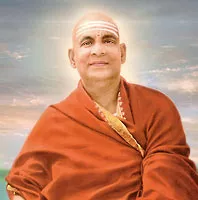 “One time my friend Hari Datta Vasudev was telling me about some of the holy ones he had met during his life. After one account he paused and then looked at me very intently. ‘They are the glory of India!’ he told me. I agree and would like to tell you of the glory of India I encountered, the glory of God revealed in humanity.”
“One time my friend Hari Datta Vasudev was telling me about some of the holy ones he had met during his life. After one account he paused and then looked at me very intently. ‘They are the glory of India!’ he told me. I agree and would like to tell you of the glory of India I encountered, the glory of God revealed in humanity.”
These podcasts recount Abbot George’s time with the great Swami Sivananda of Rishikesh in the early 60’s, beginning with how he first heard about Sivanandaji, and Abbot George’s experiences with him until Sivanandaji’s passing. This series is much more detailed than earlier podcasts about Swami Sivananda.
I meet Swami Sivananda
Swami Sivananda and Jesus
Swami Sivananda’s Humor
Days With Swami Sivananda
Swami Sivananda’s Humility – and Parting Advice
The Yoga Life 5: The Importance of Vegetarianism for the Yogi
 Here Abbot George discusses how the mind, as a mass of vibrating energy, is limited by the constitution or condition of that energy. Some elements lighten the mind, making it fluid and subtle, vibrating at a very high level. It is this latter condition that is needed for attaining the state of liberation–or rather, the state that liberates the spirit from the illusion of bondage and suffering. To attain such liberation the mind must be purified and refined, vegetarian diet being one of the best and strongest means for its purification.
Here Abbot George discusses how the mind, as a mass of vibrating energy, is limited by the constitution or condition of that energy. Some elements lighten the mind, making it fluid and subtle, vibrating at a very high level. It is this latter condition that is needed for attaining the state of liberation–or rather, the state that liberates the spirit from the illusion of bondage and suffering. To attain such liberation the mind must be purified and refined, vegetarian diet being one of the best and strongest means for its purification.
The Yoga Life 4: Niyama, the “Do”s of Yoga
 Having finished Yama, the “Don’t”s of Yoga, in the last podcast, we now consider Niyama: the “Dos” of yoga.
Having finished Yama, the “Don’t”s of Yoga, in the last podcast, we now consider Niyama: the “Dos” of yoga.
• Shaucha: purity, cleanliness
• Santosha: contentment, peacefulness
• Tapas: austerity, practical (i.e., result-producing) spiritual discipline
• Swadhyaya: introspective self-study, spiritual study
• Ishwarapranidhana: offering of one’s life to God
The Yoga Life 3: Asteya, Brahmacharya, and Aparigraha, and the Great Vow
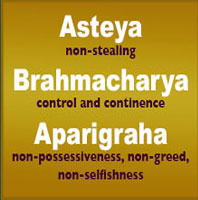 This podcast finishes the consideration of Yama, with its last three elements: asteya, brahmacharya, and aparigraha, and the sidesteps that people will take to avoid a strict adherence to these important principles. Then he considers the “Great Vow” of the Patanjali’s Yoga Sutras.”
This podcast finishes the consideration of Yama, with its last three elements: asteya, brahmacharya, and aparigraha, and the sidesteps that people will take to avoid a strict adherence to these important principles. Then he considers the “Great Vow” of the Patanjali’s Yoga Sutras.”
Asteya is abstinence from stealing, which Vyasa defines as: “the improper appropriation to oneself of others’ things.” He then concludes: “Refusal to do it, in freedom from desire, is non-stealing.” “Brahmacharya is restraint of the sex organ and other senses,” says Vyasa. From this we see that brahmacharya has a twofold nature: control and continence. Vyasa’s definition of Aparigraha is most practical: “Seeing the defects in objects involved in acquiring them, and defending them, and losing them, and being attached to them, and depriving others of them, one does not take them to himself, and that is aparigraha.”
After listing ahimsa, satya, asteya, brahmacharya, and aparigraha, Patanjali continues: “These, not conditioned by class, place, time or occasion, and extending to all stages, constitute the Great Vow” (Yoga Sutra 2:31).
The Yoga Life 2: a Practical Understanding of Harmlessness and Truthfulness
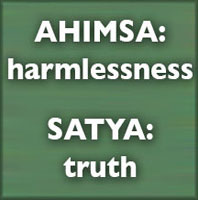 A practical and detailed analysis of the first of the components of Yama: Ahimsa (harmlessness) and Satya (truth), which it is essential for the aspiring yogi to understand.
A practical and detailed analysis of the first of the components of Yama: Ahimsa (harmlessness) and Satya (truth), which it is essential for the aspiring yogi to understand.
Ahimsa is not willfully causing any harm or pain whatsoever to any being whatsoever, in any degree whatsoever. Ahimsa includes strict abstinence from any form of injury in act, speech, or thought.
“Satya is said to be speech and thought in conformity with what has been seen or inferred or heard on authority. The speech spoken to convey one’s own experience to others should be not deceitful, nor inaccurate, nor uninformative. It is that uttered for helping all beings. But that uttered to the harm of beings, even if it is what is called truth, when the ultimate aim is merely to injure beings, would not be truth. It would be a wrong.” So says Vyasa.
But these are mere definitions. How is the yogi to apply them in his Yoga Life, in his quest for enlightenment?
Introducing the Yoga Life 1: Laying the Foundations
 The beginning of a series on how to lead the Yoga Life. Here Abbot George discusses what is lacking in the yoga practice of many, and why people fail or do not persevere in the path of yoga. Then he outlines the beginning of what the essential steps to success are.
The beginning of a series on how to lead the Yoga Life. Here Abbot George discusses what is lacking in the yoga practice of many, and why people fail or do not persevere in the path of yoga. Then he outlines the beginning of what the essential steps to success are.
First, what is meant by yoga, and what is the Yoga Life? What are the stages of an individual’s evolution? Then what are the “Foundations of Yoga”: Yama and Niyama?
Yama and Niyama are often called the Ten Commandments of Yoga, but they have nothing to do with the ideas of sin and virtue or good and evil as dictated by some cosmic potentate. Rather they are determined by a thoroughly practical, pragmatic basis: that which strengthens and facilitates our yoga practice should be observed and that which weakens or hinders it should be avoided.
Why We Meditate and the Obstacles We Overcome
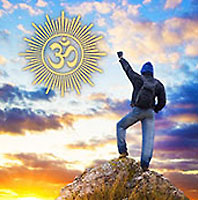 Why do we meditate? In this podcast Abbot George discusses the real reason to meditate as contrasted with wrong reasons. Then continuing with Patanjali’s instructions from the Yoga Sutras, he explains the obstacles to spiritual life and their effects.
Why do we meditate? In this podcast Abbot George discusses the real reason to meditate as contrasted with wrong reasons. Then continuing with Patanjali’s instructions from the Yoga Sutras, he explains the obstacles to spiritual life and their effects.
The obstacles are: Vyadhi: Disease of the body, Styana: Dullness; languor, debility; drooping state, Samshaya: Doubt; suspicion, Pramada: Carelessness; fault; guilt, Alasya: Laziness; idleness; apathy; sloth, Avirati: Hankering after objects; non-dispassion; sensual indulgence; lack of control; non-restraint, Bhranti-darshana: Delusion; erroneous view, Alabdhabhumikatva: Non-achievement of a stage; inability to find a footing, Anavashtitatvani: Unsteadiness; instability of mind; inability to find a footing; mental unsteadiness.
The effects of the obstacles are as follows: Dukha is pain; suffering; misery; sorrow; grief; unhappiness; stress; that which is unsatisfactory. Daurmanasya is despair, depression etc., caused by mental sickness; feeling of wretchedness and miserableness. Angamejayatva is shaking of the body; lack of control over the body. Shvasa-prashvasa is hard breathing; inspiration and expiration.
And the solution is meditation:
For removing these obstacles [there should be] the constant practice of the one principle [the japa and meditation of Om] (Yoga Sutras 1:32)
Listen to more:
Yoga, God, and Gurus: an Important Perspective
 The last podcast about God was philosophical, so in this podcast Abbot George will go into the practical side.
The last podcast about God was philosophical, so in this podcast Abbot George will go into the practical side.
It is the goal of every sentient being to evolve and attain union with God. Evolution takes place naturally as we move up the ladder from birth to birth until the level in reached in which we take charge and engage in the much more rapid process of self-evolution.
Yoga is the means of self-evolution that culminates in conscious and perfect union with God. So we need to consider God in that perspective.
The Yoga Darshan or Yoga Sutras of Patanjali is the prime authority on yoga. Patanjali was a Nath Yogi in the spiritual lineage of Gorakhnath, the greatest yogi in Indian history. Abbot George discusses Patanjali’s words on God and yoga found in the first section, the Samadhi Pada of the Yoga Sutras.
Most importantly, Abbot George talks about the proper understanding of what a guru is and is not.
Plain Talk About God
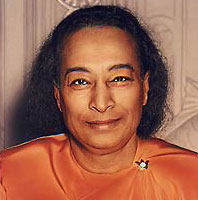 Abbot George discusses who God is, and what man is, and the importance of making God an immediate reality in our daily lives. Abbot George bases his talk on Paramhansa Yogananda’s valuable book, The Science of Religion. Here Yogananda says:
Abbot George discusses who God is, and what man is, and the importance of making God an immediate reality in our daily lives. Abbot George bases his talk on Paramhansa Yogananda’s valuable book, The Science of Religion. Here Yogananda says:
“We should take religion and God out of the sphere of belief into that of daily life. If we do not emphasize the necessity of God in every aspect of our lives and the need of religion in every minute of our existence, then God and religion drop out of our intimate daily consideration and become only a one-day-in-a-week affair.”
Abbot George illustrates his points with examples drawn from his experiences in India, where the ideal is to live daily in the presence of God.
Beyond Theory and Belief to Actual Experience
 In this podcast, Abbot George Burke speaks of the necessity of experience in spiritual life, and the fact that too often mere theory is offered as a substitute.
In this podcast, Abbot George Burke speaks of the necessity of experience in spiritual life, and the fact that too often mere theory is offered as a substitute.
The talk is from a satsang in which he comments on the preface to Raja Yoga, Swami Vivekananda’s analysis of Patanjali’s Yoga Sutras. He gives living examples of those who miss the mark, and those who get it right.
Memories of Swami Sivananda
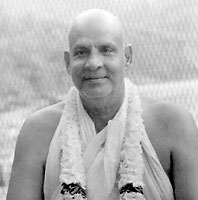 During his first trip to India in 1962 Abbot George Burke was blessed to spend time with the great Swami Sivananda at his ashram in Rishikesh. In this two-part podcast Abbot George shares his memories of this saint with visitors to our ashram.
During his first trip to India in 1962 Abbot George Burke was blessed to spend time with the great Swami Sivananda at his ashram in Rishikesh. In this two-part podcast Abbot George shares his memories of this saint with visitors to our ashram.
In the first podcast, Abbot George recalls his first meetings with Swami Sivananda, and the saint’s invitation to dine with him on a lunch of “plain boiled rice.”
Among the many saints that Abbot George met in India, he described Sivananda as “beyond description or classification. He loved and we loved in return.”
In this second podcast Abbot George relates how Sivananda shared this love through his wisdom and humor, and tells Sivananda’s one prescription for successful sadhana.



